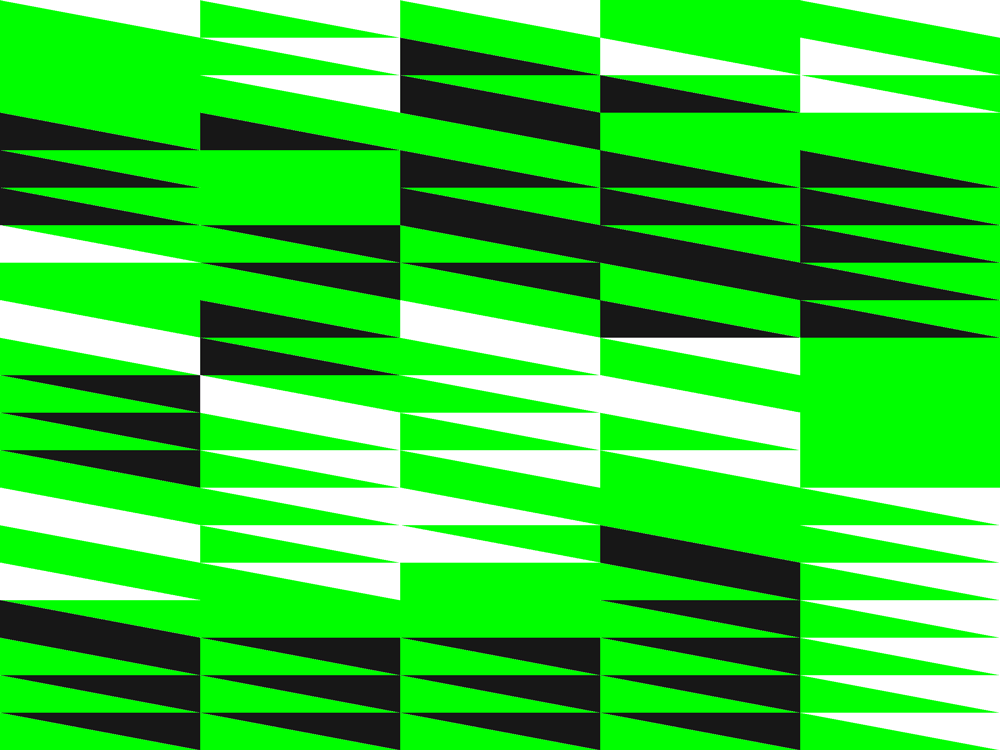Tim: If Coding Systems would be a research project, what would be the question that we are trying to answer?
Flexible Visual Systems in the context of Creative Coding should also ask the question of how we think, create, and finally relate through the computer.
Martin: The obvious question is how flexible visual system (fvs) design translates into code, but as fvs proposes not just a definition of an identity system but as well an approach to design one, fvs in the context of creative coding should also ask the question how do we think, create and finally relate through the computer. Big questions, I know, but critical ones, as digital devices have been made indisposable.
Let me try to formulate theses for the three big questions, which can lead to other research questions:
Systemic thinking through coding, lives in the limitations of digital devices and artificial languages. While the processing speed exceeds the processing speed of living systems, the “processed” is far simpler than the “processed” of living systems.
CS Thinking: Systemic thinking through coding, lives in the limitations of digital devices and artificial languages. While the processing speed exceeds the processing speed of living systems, the “processed” is far simpler than the “processed” of living systems. It is important to be aware of the differences between living systems and artificial systems to understand what to expect of them. We can’t expect solutions of artificial systems, but we can expect them to be a mirror of our understanding. Can CS be a model for the symbiotic thought processes of humans and machines?
CS Creating: Being aware of the difference between living and artificial systems leads to the question of how we interact with the machine. Which parts can be left to the machine and which parts should be done by the human. The usual response is that the computer is the solution for all the work that is hard and takes time. Take AI illustration as an example. Becoming a great illustrator is extremely hard work. It requires daily practice for a very long time. AI imitating existing illustration makes us skip the learning process and come up pretty quickly with maybe boring, but good looking illustrations. We are saving a lot of time (and money). We seem to ignore that learning a craft is not just technical learning, but in living systems interwoven with other thought processes. It embodies learning at its purest form. Can CS reintegrate what makes the human creative process unique?
No tool is values neutral.
CS Relating: No tool is values neutral.1 Often tools that had positive intentions when invented, end up being used in a way that they have negative consequences for others. A hammer is a helpful tool, but it can be used to murder someone. Social media brings together people, but also makes them addicted, depressed and commit suicide. AI is a black box that can help us to find new medicine, but also make it pretty easy for laymen to make biological weapons. Can CS be more aware of 2nd and 3rd order effects of its tools? What kind of relationships with living and nonliving beings does CS create?
I just named a few questions here. Lots of smaller questions need to be formulated along the process. How would you answer these questions?
Tim: I think you already touched the most important topics.
Computational Awareness: I’d intensify the focus on the human relationship with code as a language to speak to machines.2 How do we encounter these languages? What kind of prejudices, anxieties, hopes and biases do we have? Computers are black boxes. But which principles can we learn and apply to build system architectures with code that we can control and understand? How can we balance out the speed of human and technological development to stay in control of computation? How can we act more responsibly as designers of systems?
System Coding: Programming languages are powerful tools to visualize systems, how things are entangled with each other, how complex structures look like. We can use code to develop networks of nodes to get and nurture a deeper understanding of them. Object Oriented Programming combined with arrays, data driven network graphs, all these fields I’m keen to explore in the next years with CS. I am excited to do that with you.
Footnotes:
- Technology is Not Values Neutral: Ending the Reign of Nihilistic Design, We fail to take tech seriously when we do not grasp its full impact on humans https://consilienceproject.org/technology-is-not-values-neutral-ending-the-reign-of-nihilistic-design-2/ ↩︎
- John Maeda – How to speak Machine
https://www.penguinrandomhouse.com/books/539046/how-to-speak-machine-by-john-maeda/ ↩︎
Published on November 4, 2024
Last updated on November 6, 2024
